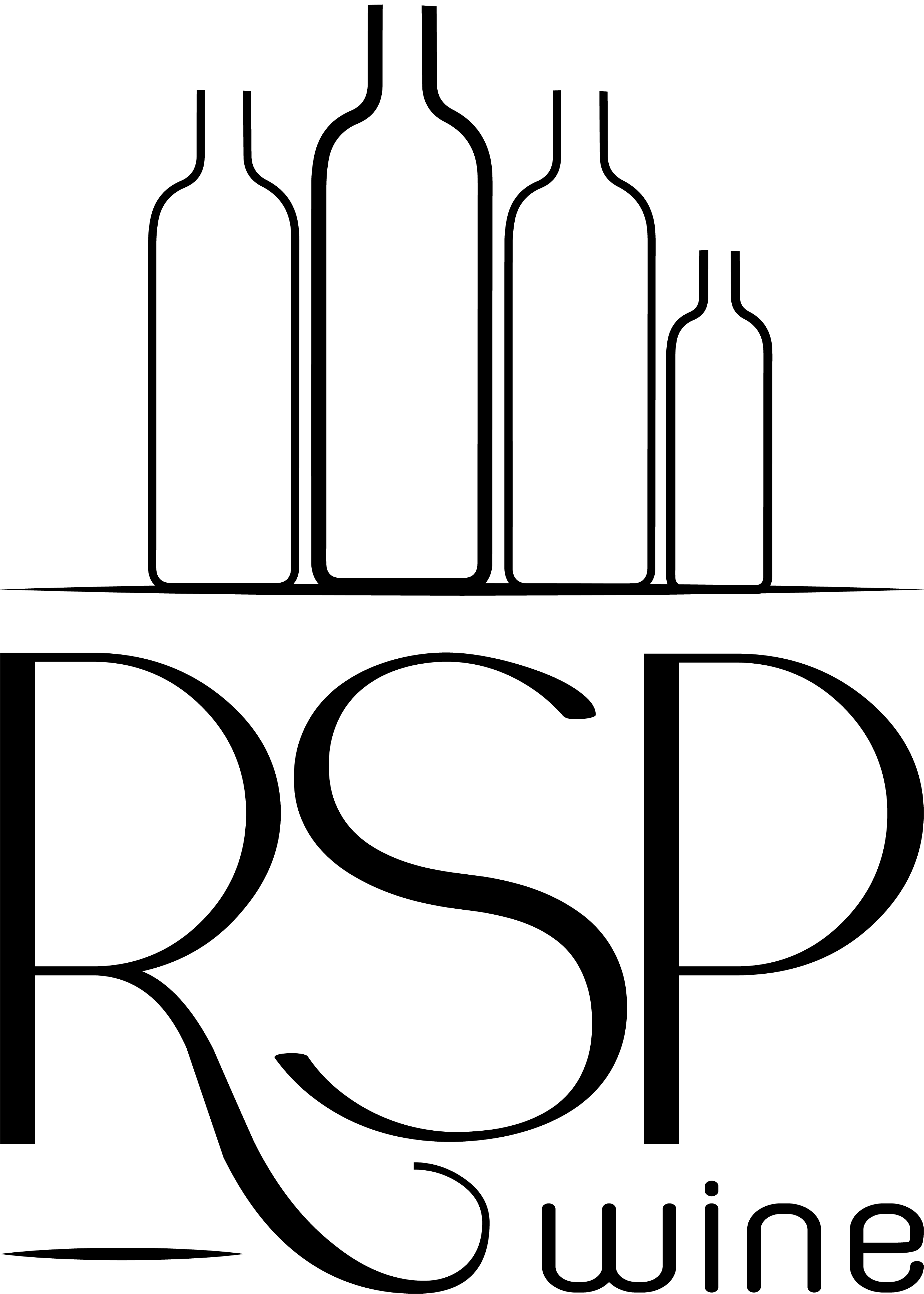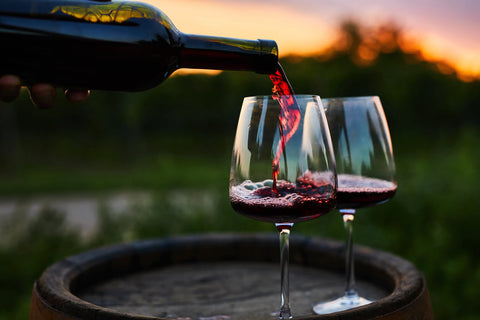THE CYCLE OF THE VINE
A DEEP JOURNEY THROUGH THE SEASONS
Welcome, wine lovers and those curious about the wine world!
Today, I am delighted to take you on this detailed exploration of the vine cycle, a symphony in several movements where each season plays its unique role in creating the finest wines. Sit back and dive with me into the intricacies of each step.
1- WINTER REST: DORMANCY (DECEMBER-FEBRUARY)
The vine cycle is an annual ballet that begins with the winter rest, a period of dormancy during which the vine stores the energy needed for the coming spring. During this period, winegrowers engage in meticulous work of precise pruning. This operation is crucial because the way the vines are pruned has a direct impact on the quantity and quality of the grapes to come. It is a time when every cut counts, when every gesture influences the yield and flavor of the grapes to come.

Winemakers use different pruning methods to shape vines according to their preferences and the specific characteristics of the vineyard. These methods include Guyot, Guyot Simple, Guyot Mixte, Cordon, and Gobelet… Here they are:
- Guyot
This pruning method consists of leaving a long main arm on which the future grape clusters will grow. A certain number of spurs (branches) are cut short, carrying the buds for the next season. It is a method that allows a good balance between vegetative growth and fruit production.
- Guyot Simple
This method is similar to Guyot, but with one variation. Instead of leaving a long main arm, only a short one is left. This method is often used in areas where spring frosts can damage the buds, because the main bud is lower on the plant and therefore less exposed.
- Guyot Mixed
It is a combination of Guyot and Guyot Simple. Some arms are pruned long (Guyot) and others short (Guyot Simple). This method offers some flexibility and is suitable for vineyards where conditions vary from one plot to another.
- Cord
In this method, the main trunk of the vine is cut short, leaving horizontal branches called cordons. These cordons bear the buds that will give rise to the grape clusters. This is a method commonly used in southern vineyards.
- Cup
The Gobelet is a traditional method where the vine is pruned into a short, stocky bush, resembling a drinking glass (hence the name). The branches grow freely outward. This method is often used in hot regions where the shade of the leaves protects the grapes from the hot sun.

2- AWAKENING IN SPRING: CRYING (MARCH-MAY)
With spring and the arrival of milder temperatures, the buds of the vine begin to bloom, announcing the beginning of a new season. However, winegrowers remain vigilant, because spring frosts can cause irreparable damage to young shoots. To protect themselves, they use different techniques:
- Water Spraying : This method involves spraying water on the vines before the expected frost. The water freezes and forms a protective layer of ice around the buds. This ice acts as a thermal barrier, preventing the buds from suffering damage from the cold.
- Warming Candles : Warming candles are placed between the rows of vines and lit on cold nights. They produce a gentle heat that keeps temperatures around the vines from dropping too low. However, this method is expensive and requires constant monitoring.
- Wind towers: Wind towers are devices that stir the air near the ground. By mixing cold air near the ground with warmer air at higher altitudes, wind towers raise the temperature near the vines, thus providing protection against frost. Some estates with large resources may even use helicopters.
- Hail Cannons: These cannons work by launching projectiles (like rockets) into the atmosphere. These projectiles, once in the air, release chemicals that promote the formation of tiny ice nuclei. These nuclei encourage the formation of smaller hailstones, reducing their impact when they reach the ground.
Additionally, the vine, when pruned, can produce tears or “weeping” of sap, a natural phenomenon that shows that the plant is active and healthy.

3- FLOWERING (JUNE)
In early summer, the vines are adorned with beautiful clusters of flowers. This is a crucial step, as the pollination of flowers marks the beginning of the grape-forming process. The vineyards are buzzing with activity, attracting bees and other essential pollinators.
Flowering is a crucial stage where vines produce delicate flowers. Each flower has the potential to become a grape. Weather conditions during this time have a significant impact on yield. Dry, warm weather promotes successful flowering, while excessive rain or cold temperatures can lead to coulure, where flowers drop prematurely, reducing the potential harvest.

4- THE FORMATION OF CLUSTERS (JULY-AUGUST)
During the summer, grapes continue to develop and ripen. Winemakers ensure that the vines receive enough water and sunlight to ensure good growth of the clusters. This is also the ideal time to carry out green harvesting, carefully removing some clusters to allow the others to concentrate and fully ripen.
This period is essential to determine the quality and quantity of the future harvest, and it includes several key phases: fruit setting, leaf shedding, veraison and ripening.
-
Fruit set :
Fruit set is the phase where fertilized flowers transform into small fruits, young grape berries.
-
Stripping :
This allows better exposure of the grapes to light and air, thus promoting uniform ripening.
-
Veraison:
Veraison is a key stage where grapes begin to change color, from green to red for red grapes or from green to yellow for white grapes. It is also the time when grapes accumulate sugars and lose their acidity, which is essential for the development of the flavor and aromatic profile of the wine.

-
Maturation:
Ripening is the final phase before harvest, where grapes continue to ripen, accumulating sugars, aromas and phenolic compounds. Grapes are tasted regularly to assess their sugar content, acidity and aromatic maturity. Winemakers decide the optimal time for harvest based on these factors, as well as their own winemaking style and the type of wine they wish to produce. There are 3 main types of ripeness:
- Phonological Maturity: The vine has completed its normal vegetative cycle, approximately 40 to 50 days after veraison, thus marking the end of its active growth.
- Technological Maturity: It is defined either by a maximum sugar content or by a limit acidity value. This maturity is crucial to determine the fermentation potential of the grape.
- Aromatic Maturity: At this stage, the grapes have an optimum concentration of varietal aromas, without being disturbed by undesirable aromas such as green pepper, for example, in varieties such as Cabernet Sauvignon.
5- THE HARVEST (SEPTEMBER-OCTOBER)
The long-awaited moment has finally arrived!! The harvest during this period allows winegrowers to harvest their grapes manually or mechanically, each has the choice depending on the appellations.
The harvest is the culmination of a whole year of hard work. The grape harvest is often a festive event, it is the time when the winegrowers should not be disturbed. Because every day can make a difference in the ripening of the grapes. Late harvests can last until November for grapes that require a longer ripening time.

6- DORMANCY (NOVEMBER)
After harvest, the vines go dormant again. The leaves change color, creating a beautiful fall display in the vineyards. This is a time when winemakers evaluate the vintage, reflect on successes and challenges, and plan for the following year. It’s also a great time to plant new vines!

In conclusion, each season brings its own challenges and rewards, shaping the unique character of each vintage. The passion and dedication of the winemakers shines through in every wine we taste, reminding us of the intimate connection between nature, man and wine.
So, the next time you enjoy a drink, remember this journey through the seasons, the growing vine and the subtle art of our terroir! 🍇🍷




Comments (0)
There are no comments for this article. Be the first one to leave a message!